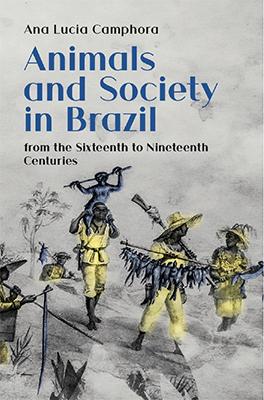Camphora, Ana Lucia. Animals and Society in Brazil, from the Sixteenth to Nineteenth Centuries. Translated by Miriam Adelman. Cambridgeshire: The White Horse Press, 2021.
This pioneering overview of how social relations were constructed as interspecies relations offers the reader a starting point for bringing these encounters into a historical narrative that unfolds over the course of several centuries of Portuguese South American colonial life. In showing the decisive importance of non-human animals in the development of Brazilian society, this volume provides a point of departure for the construction of an international corpus of knowledge in the fields of environmental history and human-animal studies, adding complexity to existing narratives and throwing new light on the role of Latin American societies within the global picture. Brazil, the largest country in South America, is home to some of the planet’s richest fauna, is ranked as one of the world’s largest meat producers (beef, chicken and pork) and also has a huge population of pets, estimated at 54.2 million dogs, 39.8 million birds and 23.9 million cats, according to a 2018 survey. Non-human animals have always been there, domesticated or wild, alongside their human counterparts. These sets of relationships configure what is still a less-understood part of Brazilian history. In its six chapters, this book considers the exotic wildlife diet base adopted by European explorers; the uses of animals for medicinal purposes; intense hunting and whaling activities; and the introduction of domesticated animals from Europe and other Portuguese colonies, focusing on the decisive contributions of cattle, horses and mules in the occupation and colonisation of the extensive Brazilian territory, and the precarious system of meat supply in the-then capital, Rio de Janeiro, in the nineteenth century. (Source: The White Horse Press)
© 2021 The author and the White Horse Press. Reproduced by permission.


